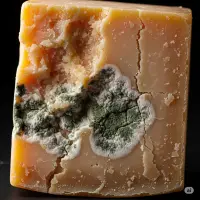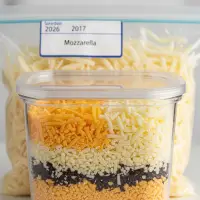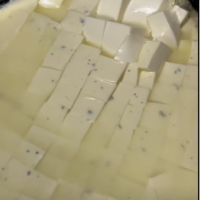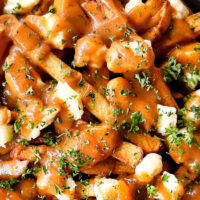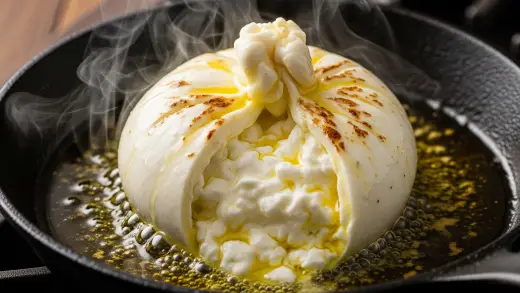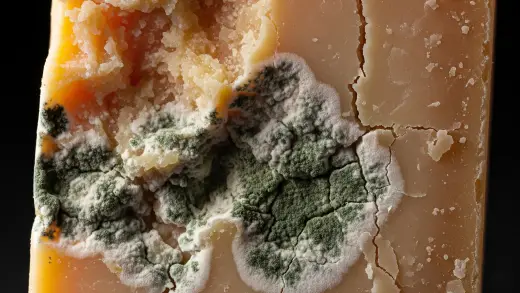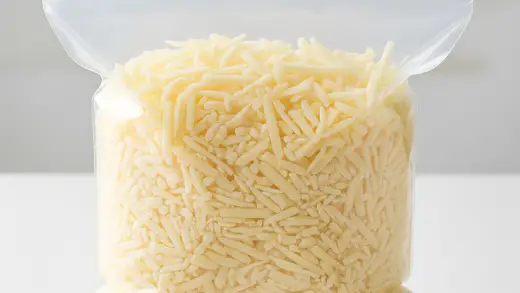No, Gorgonzola cheese is not exactly the same as blue cheese, but it is a type of blue cheese.
You can think of blue cheese as the broader category, and Gorgonzola is a specific variety that falls under that category. Gorgonzola is an Italian blue cheese with specific characteristics.
Ever seen those cheeses with cool blue or green streaks running through them? We’re talking about blue cheese, and one famous type of blue cheese is called Gorgonzola. Lots of folks get a little mixed up and wonder, “Wait, are they actually the same thing?”
Think of it like this: Gorgonzola is like a specific breed of dog, like a Golden Retriever. Blue cheese is like saying “dog” in general – there are lots of different kinds! So, while Gorgonzola is a blue cheese, not every blue cheese is a Gorgonzola.
Did you know that some people think blue cheese tastes a little bit like stinky socks? That might sound weird, but that strong flavor is what makes it so special for many cheese fans.
Let’s dive into what makes Gorgonzola unique and how it’s different from other blue cheeses out there.
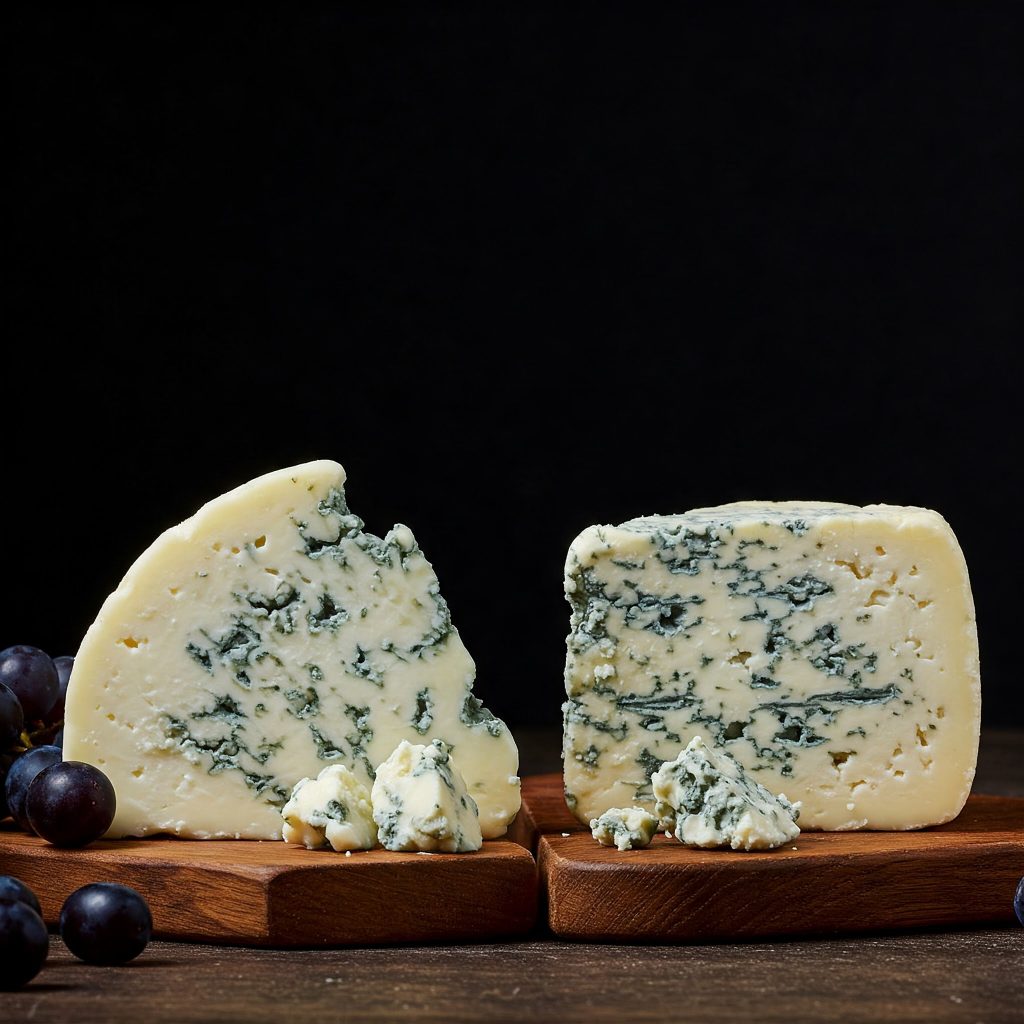
What is Blue Cheese?
Blue cheese gets its unique look and flavor from special molds, mostly Penicillium roqueforti. Don’t worry, it’s the good kind of mold, totally safe to eat! Think of it like adding yeast to bread to make it fluffy. This mold grows inside the cheese, creating those cool blue or green veins. These veins aren’t just for show; they’re what give blue cheese its special taste and smell.
There’s a whole world of blue cheeses out there! You might have heard of Roquefort from France, which is made with sheep’s milk, or Stilton from England. Each type has its own special flavor, but generally, blue cheese is known for being sharp, a bit salty, and sometimes even a little bit pungent – that’s a fancy word for strong-smelling!
The feel of blue cheese can change too. Some are super soft and creamy, almost like a spread, while others are firmer and crumblier, perfect for breaking into pieces.
How do they make this interesting cheese? Well, cheesemakers start with milk, just like any other cheese. Then, they add the Penicillium mold. As the cheese ages, they poke it with needles.
This lets air get inside, and the mold loves air, so it grows and makes those veins we talked about. It’s like giving the mold little air tunnels to grow in!
What is Gorgonzola?
Gorgonzola is a type of Italian blue cheese, named after the town of Gorgonzola in Italy. It’s made from cow’s milk and has characteristic blue-green veining.
You’ll find two main types: Dolce (sweet), which is creamy and mild, and Piccante (spicy), which is firmer and has a sharper flavor. The cheese is aged, developing its unique taste and texture.
What is Blue Cheese?
Blue cheese is defined by the presence of Penicillium mold, which gives it those distinctive blue or green veins you see. This mold is key to its sharp, salty, and sometimes pungent flavor.
You’ll find different kinds like Roquefort and Stilton. The texture can vary from creamy to crumbly. During production, this mold is introduced, and as the cheese ages, it develops its unique characteristics.
Key Differences Between Gorgonzola and Blue Cheese
So, you’re wondering what really sets Gorgonzola apart from other blue cheeses? While they share that awesome blue mold, there are some cool differences that make each one special! Let’s check them out:
Where they come from
Think of it like passports for cheese! Gorgonzola has an Italian passport – it can only be made in certain regions of Italy. Other blue cheeses can come from different countries around the world.
What they’re made of
Imagine the milk that goes into making them. Gorgonzola is made with cow’s milk, which gives it a rich taste. But other blue cheeses can be made with milk from sheep or even goats, which can change the flavor quite a bit!
The special mold inside
Remember that Penicillium mold we talked about? Well, Gorgonzola often uses a specific type called Penicillium glaucum.
Other blue cheeses might use a different type, like Penicillium roqueforti. It’s like different kinds of yeast for bread – they can give slightly different results.
How they taste
If you try Gorgonzola, you’ll probably notice it’s on the milder and creamier side compared to some other blue cheeses. Some blue cheeses can be much sharper and bolder in flavor.
How they feel
Gorgonzola is famous for its lovely creamy texture. It’s often soft and smooth. Other blue cheeses can be crumblier, breaking apart easily.
Those cool blue lines
Gorgonzola has its own unique look with those blue-green veins running through it. Other blue cheeses might have more of a blue or even a greenish color in their veins.
So, while they’re both delicious blue cheeses, Gorgonzola has its own special Italian flair thanks to where it’s from, the milk used, and even the type of mold that makes it so yummy.
How to Use Gorgonzola and Blue Cheese?
So, let’s talk about how you can enjoy these tasty cheeses! Both Gorgonzola and other blue cheeses are fantastic in the kitchen, but their different flavors and textures mean they work best in slightly different ways.
Gorgonzola
Because it’s often milder and creamier, Gorgonzola is super versatile.
- Think creamy and dreamy: It melts beautifully into sauces for pasta or pizza, making them extra rich and flavorful.
- Sweet and savory friends: It pairs wonderfully with sweet things like honey, figs, or pears. Imagine a pizza with Gorgonzola, pears, and walnuts – yum!
- Salad superstar: Crumbled Gorgonzola adds a lovely tang to salads, especially with bitter greens like arugula.
- Wine time: It goes great with sweeter wines like Port or a fruity red.
Other Blue Cheeses
With their often bolder and sharper flavors, other blue cheeses can really add a punch to dishes.
- Bold flavors needed: They’re fantastic crumbled over steaks or burgers for an intense flavor kick.
- Hearty salads: Think blue cheese with crunchy bacon and crisp apples in a salad.
- Dip it! Blue cheese makes a classic dip for chicken wings or veggies.
- Crumbly goodness: Their crumbly texture makes them perfect for sprinkling over dishes right before serving.
- Wine pairings: They often pair well with bolder red wines like Cabernet Sauvignon.
Melting vs. Crumbling
Generally, Gorgonzola’s creamier nature makes it a better melter than some of the drier, more crumbly blue cheeses like Roquefort. Those crumbly ones are often best enjoyed as they are, sprinkled on top of things.
So, whether you’re melting creamy Gorgonzola into a pasta sauce or crumbling a sharp blue cheese over a salad, both bring something special to the table!
Conclusion
So, there you have it! Gorgonzola is definitely part of the blue cheese family, but it’s like a special cousin with its own Italian roots, cow’s milk make-up, and often milder, creamier vibe.
Remember, it’s all about where it comes from, what it’s made of, and even the type of mold that gives it those cool blue streaks.
The best way to really understand the difference is to give both Gorgonzola and another blue cheese a try. You might find a new favorite. What’s the best blue cheese you’ve ever tasted? Share your cheesy adventures.





